Introduction
The IPAQ is a classic series in the world of Pocket PC’s, beginning with COMPAQ’s H3650. Just 32MB of memory, and a 4-bit screen. It paved the way for many to come, with the same shape kept for a long time. Expension packs, navigation, bluetooth, even WiFi! There are many modules and ways to expand the possiblilities of your iPAQ
Over time technology kept getting smaller and faster, so did the IPAQ. More and more things got built in, more memory, better screens. Bluetooth so you can sync with your new phone, why type on thet horrible num pad when your PDA can do that much better? There are many functions one can accomplish, and the sweetspot, that’s where the IPAQ 214 comes in.
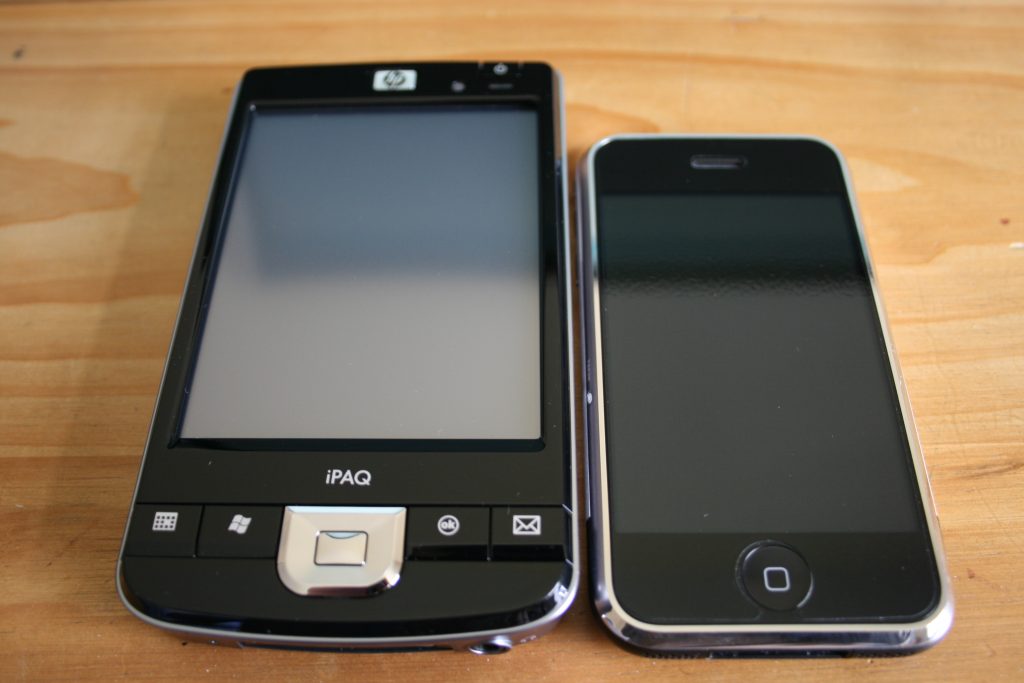
Enter the iPAQ 214, the sweetspot in functions age and speed.
Made in 2007, the 2xx series is concidered the sweetspot, a full VGA screen, high capacity SD cards, modern WPA2 internet, a CF slot and no more worrying about data loss due to its use for ROM instead of RAM. And its highest speed processor avaiable, the PXA310 coming in at a cool 624Mhz.
High capacity SD cards for storing software, music and videos, (I have tested up to a 128GB card and yes it does work!) CompactFlash storage, modern wifi for things like chatting and web browsing via Opera Mobile 10.

With both the most used types of flash storage, you can add whatever you want. And with CFIO and SDIO support, it also means you can plug in things like a SD card webcam, or a GPS reciever for navigation! The only thing missing is infrared. But who’s going to use that nowadays anyway?
The IPAQ 214 is the last of the stand-alone type of devices, before HP went full smart-phone and lowered the system’s specifications. The “Enterprise Handheld” was meant as a middleground of sorts, you would get one of these for your job and keep all personal job information on that instead of bloating up another device.
But with so much connectivity, what can you REALLY do with these pre-smartphone devices?
Possible uses:
- Navigation:
Use something like TomTom or GPSTuner 5.4 to navigate, plot routes or keep track of your progress. Simply slot in a GPS reciever in the top, or connect one via Bluetooth and off you go! - Media Player:
Use its built in Windows Media Player or TCPMP/CorePlayer to listen to your favorite music, watch video’s or even compose! Bluetooth headphones are supported as well. - Digital Audio Workstation:
You can use MilkyTracker to compose music right in your pocket, or for the more advanced users look at SunVox! - Math:
Use your PDA as an cheap advanced calculator everwhere you go. - Agenda/PIM:
The point of an PDA is of course, its Personal Information Management. Sync it with your PC and keep tracks of tasks, your calender, to-do’s and much more. - E-Mail client:
Using nPOPuk and its WPA2 support ensures you get your email, anywhere you go. - Games:
Of course, games on Pocket PC are one of its best sides, what about SimCity, Bejeweld 2 or even Age Of Empires?
My selection of essential programs:
Here is a list of the go-to applications I have installed and use daily on my 214’s:
- Math:
Usually for PDA’s Calc98 is the go-to but its menu’s dont work properly on newer devices, so take a look at RealCalculator 3.0 instead. - E-Mail:
nPOPuk for Windows Mobile 6 with SSL does my e-mail on the go. Clicky - Navigation/Routes:
GPSTuner 5.4 as found here does the trick very nicely, giving stats, graphs, waypoints, route planning and much more.
TomTom is a solid option as well for navigation, but it did not work for me. - PDF’s:
Adobe Reader 2.0 for Pocket PC works very nicely if ClearVue PDF is not to your liking. - File Management:
Total Commander 2.52 for Windows Mobile 6 does easy ZIP files and editing of files File Explorer will not let you. - Media Player:
As mentioned before, either Windows Media Player or TCPMP/CorePlayer to listen to your favorite music, watch video’s does amazingly well for the PDA. Tested movies in 640×360 for ‘widescreen’ movies in 3Mbit/sec. Turn the screen brightness up a bit, plug in your headphones and away you go! - Games:
The classic Bejeweld 2 (version 1.31: grab the one in the “standard” folder.) and the many many ports of Tetris will do just fine.
The setup:
Thus, my ‘setup’ for an iPaq 214 is a largely sized SD card for storing all your things, and a Bluetooth or CompactFlash (CFIO) card GPS reciever.
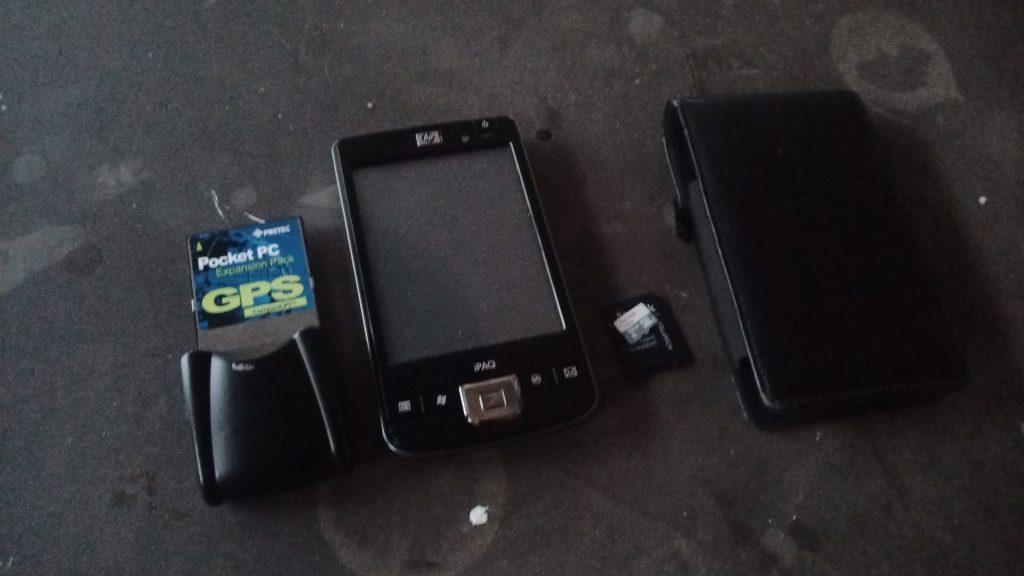
Pocket PC GPS reciever from ~2004, the IPaq 214 from 2007, any SDHC capable card and the basic carrying case that came in the box when you bought your 214.
Music, Movies, Navigation, complex math, keeping your schedules tidy, it does it all. And the best part? You can find them for fairly cheap most of the time!
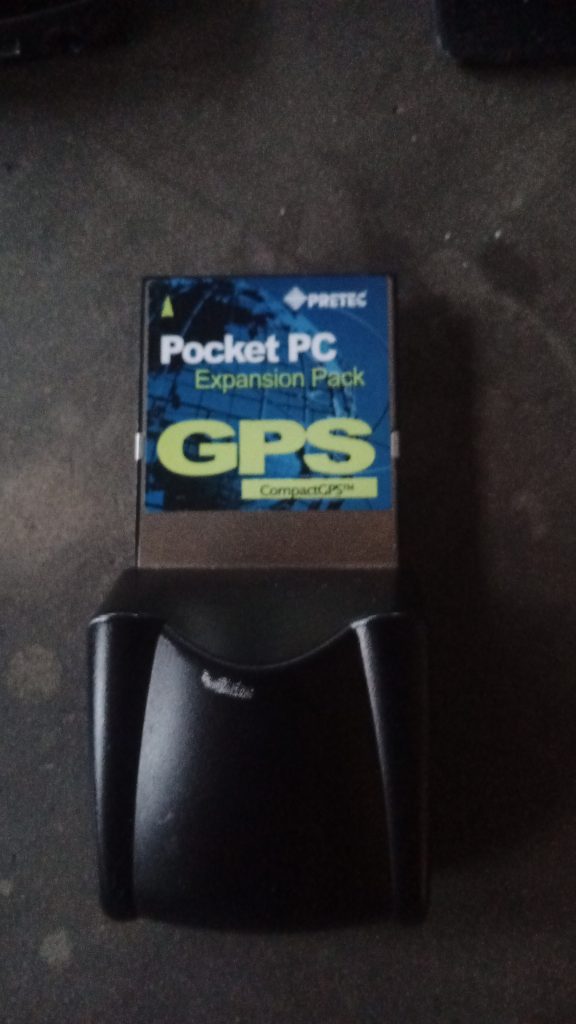
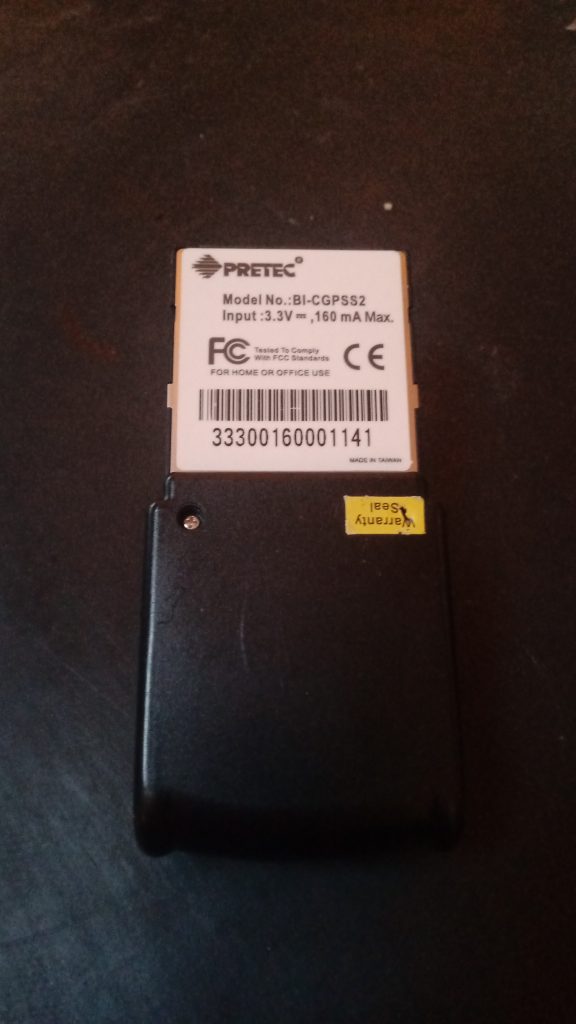
As for the GPS, any card-type GPS reciever can do the trick, Bluetooth ones as well.
I have used a TomTom Wireless GPS MkII but its charger port started to flake out, so here we have a Pretec BI-CGPSS2 CompactGPS Expension Pack. (Man that’s a mouthful isnt it!)
This also makes it easier for taking the entire deal on trips, as an USB powerbank can now power both the PDA and GPS without any extra hassle. Neat!
The downsides:
Not all is well and dandy though. The following things are of mention:
- The speed of Windows Mobile itself.
Double the speed of previous PDA’s that were popular? Yes! In SPR-Benchmark, comparing this PXA310 at 624Mhz processor to the well-used PXA255, which runs at 200Mhz or so and is WIDELY used in many Pocket PC’s, the 310 scores more then double. But, looking at things like the operating system itself, it will score lower.
That’s to blame on the more modern Windows Mobile 6. It eats quite a bit more processing, as it does a lot more but does not seem to well optimized. This means for the end-user that unless your application does not rely a lot on baked-in menu’s in Windows, it might not feel all that much faster. That is one thing you should note.
It does a lot more, but might not feel that much better depending on what you want to do. - Infrared.
What would be a great addition to really make it the ultimate PDA, infrared is sadly missing.
It was not used as much by then, no. But being able to sync with literally any system and any phone you want is a great selling point.
Infrared printers as well, bluetooth and networked printers might not work so well, while infrared will.
Or, for an universal remote contol? That’s another thing PDA’s were great for, one application to control all your equipment. No can do here! - Compatibility with synchronisation.
One major downside that is by the most annoying is getting synchronisation to work.
To get the best experience, you MUST use Windows Mobile Device Center, only the 32-bit versions of Office 2010 or older and Windows 7 or older. Windows 10 barely works and requires way too much tweaking to get it to talk to your PDA.
Now, because the 214 works on flash and not RAM for storage this is less of a big deal but still quite annoying to do/set up.
Conclusion:
The iPAQ 214 is a great PDA, with its flaws but heavily outweighed by its great qualities.
Synchronisation is a finniky business, but the massive software library, easy to use systems and much much more, make it very well worth its full name. “iPAQ 214 Enterprise Handheld”.
If you can get one for cheap, and it still works it is well worth to try. There are so many things you can do with it and that still work today it truly makes a great dedicated travel companion.
Hope your enjoyed making and learning with me, and thank you for reading!
More pictures!
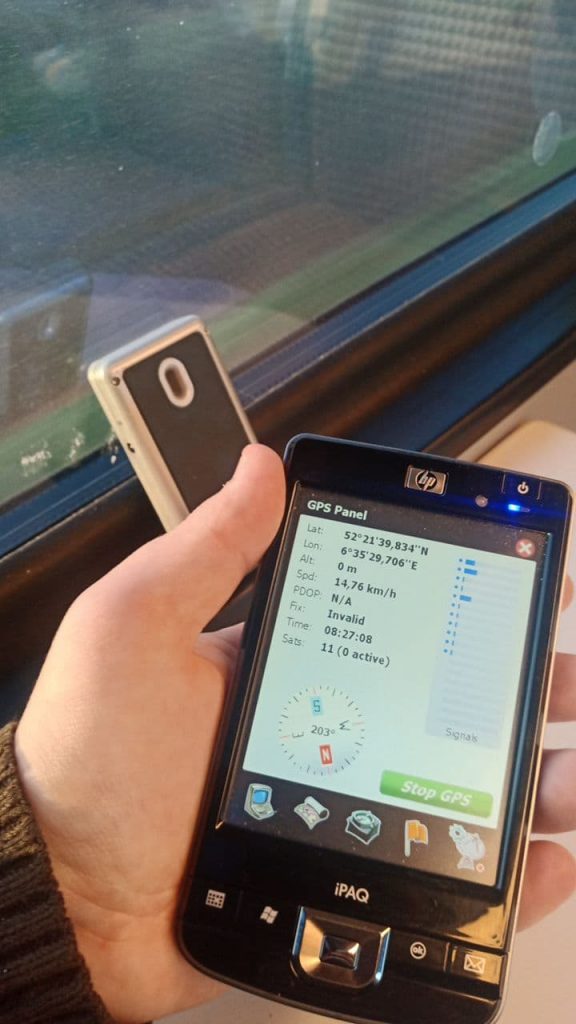
TomTom Wireless GPS, in the train! 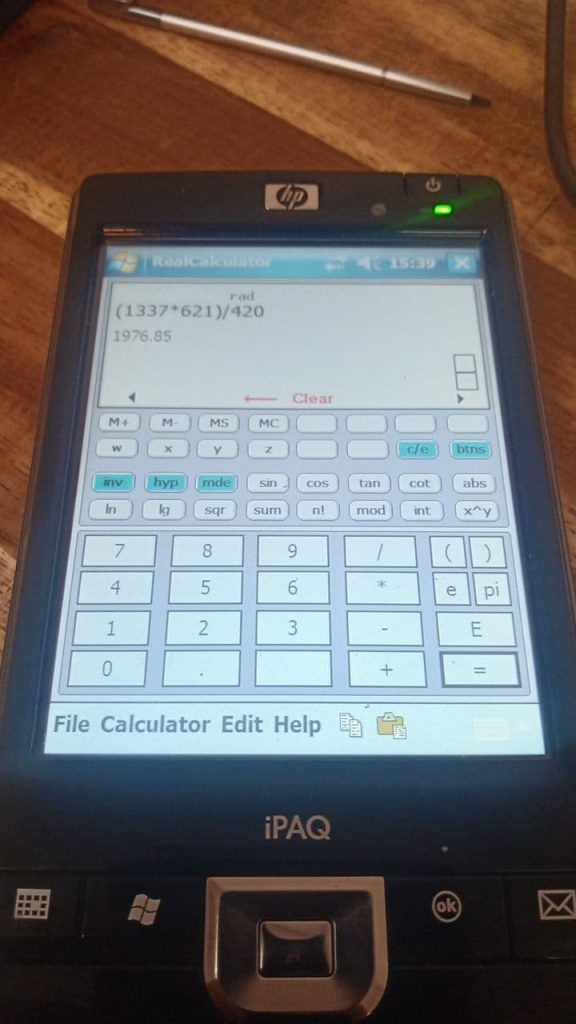
RealCalculator 3.0 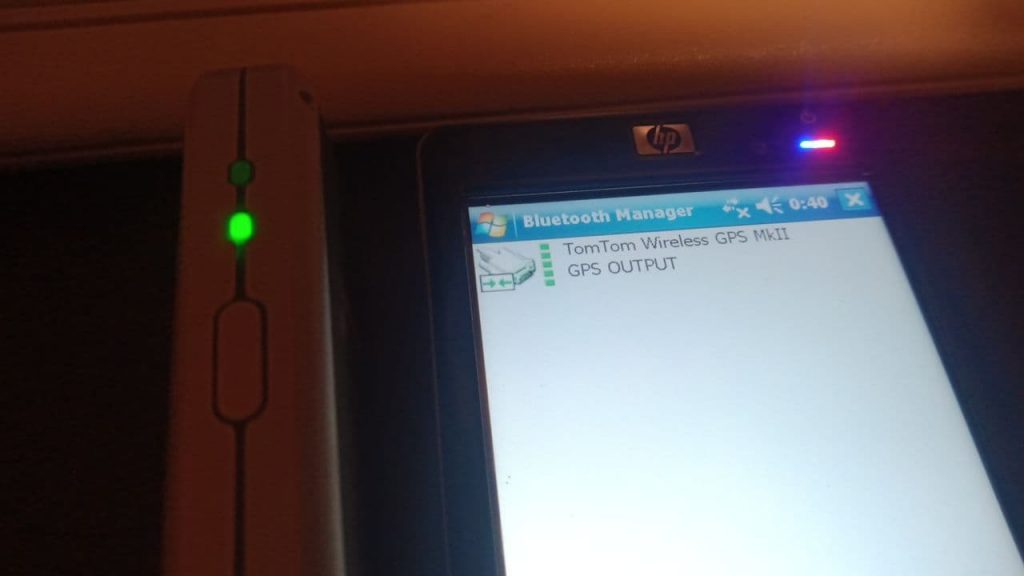
TomTom Wireless GPS, quite easy to connect. Any other Bluetooth GPS will go the same way. 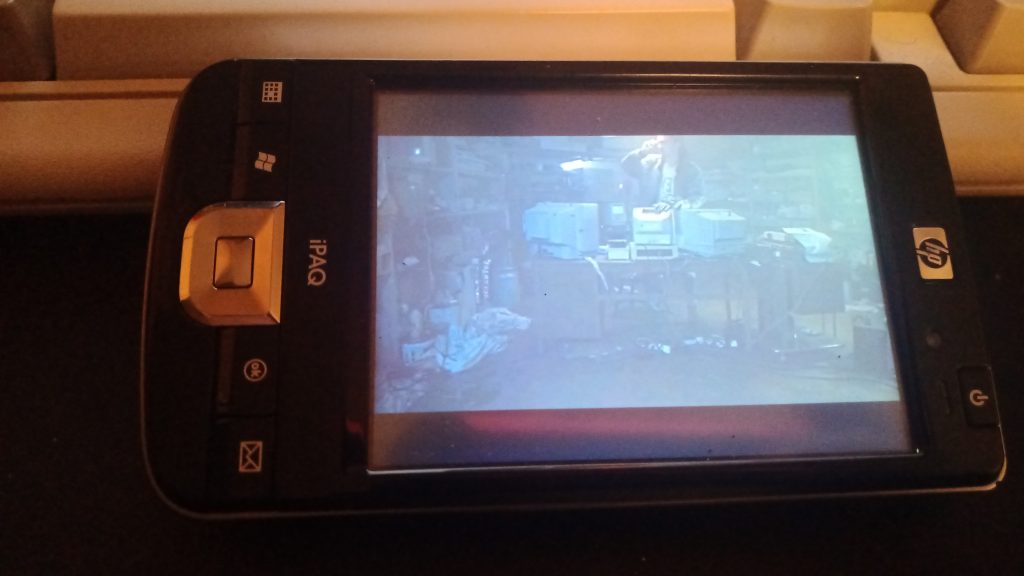
Or watch a movie with CorePlayer? (I swear the colors are much better in person 😛 )

It’s a beautiful piece of hardware indeed, despite having no graphics acceleration some guy ported Android 2.3 to it 😛